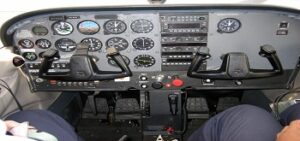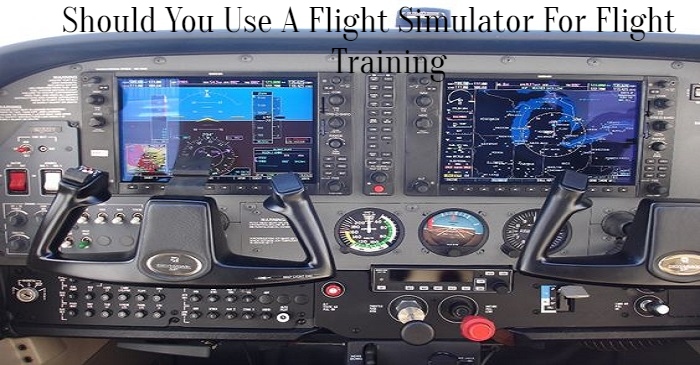
Flight training using simulators was not an opportunity for me until I needed a B737 Type Rating. It has been something that I thought should be researched for its possible benefits, so I thought I would answer the question, Should You Use A Flight Simulator For Pilot Training?
Should You Use A Flight Simulator For Pilot Training?
With the high cost of aircraft rental fees because of super-inflated fuel costs, hours spent using a flight simulator for flight training with an Instructor make sfantastic sense. You can fly 50 simulator hours toward your commercial plus 20 hours on your instrument!
Should You Use A Flight Simulator For Pilot Training?
1. The Cost Of A Simulator.
I looked over a number of options shopping for a flight simulator and the cheapest way to is with a home PC and Microsoft Flight Simulator X. The 2020 bare-bones version comes up to 35 airports using 37 different aircraft.
There are 2 additional versions with more airports and airplanes, but you only need a few for training. The base edition is $60 bucks and a PC to run the program. The Deluxe is at $90 bucks and Premium Deluxe for $120. I saw one ad for the Standard model for $45 at CDKey.
To me, that is a perfect solution for learning the basics and they purport it to have realistic weather and turbulence for better circumstances and poutcomes.
Prices for any of the other options become cumbersome and unless a person can afford the luxury of a fancy simulator, I cannot see the benefit above Microsoft’s product.
Elite Flight Simulators have software for home PCs starting at 2oo bucks for basic flight simulation but I like to know what I am buying and the reviews need to be positive. I thought I should be clear that it’s the buyers beware.
There are a lot of options for simulator training and I am not here to say what to buy but I do believe having one is money well spent.
Research the available products and choose your best match and learn to fly. You can read the page for Microsoft Flight Simulator here.
2. Find An Instructor.
Remember that you can log hours with an approved flight simulator and with an accredited instructor. The savings you will find in a simulator will be learning the proper flight technique without renting an airplane.
When you are in the aircraft, you have a significant edge in performing maneuvers as opposed to learning them.
I recently read an article by Rod Machado that speaks of an instructor friend, Ed Valdez, who used 30 hours of supervised sim time with a pilot that had logged 39 hours of Cessna 172 time and was ready for the private pilot check ride.
Ed’s success is using 3 to 4 hours of sim time before each actual flight. You learn the lesson before you fly. Rod stated that this technique cut about $4500.00 off the cost of the Private Certificate.
This requires a greater investment in equipment like three big screen monitors and a PC with a good CPU that has 1 or 2 video cards. I think that is worth the expense of the equipment.
Find a good instructor that will work with you and follow a good syllabus and plan.
3. Practicing Maneuvers.
Repositioning the aircraft in order to do the task again is expensive. A sim allows you to reposition instantly.
For example, if you have trouble with the final approach and landing phase, you can practice this easily, simply with the push of a button to be ready again.
A flight simulator will help overcome an obstacle or not something not fully understood quickly and not waste time in the aircraft.
Simulators are also excellent platforms for learning emergency procedures in a safe environment.
4. Fly when and where you want.
To me, that would be a real plus in learning to fly because you can practice at your leisure without the worry of renting an airplane. Pick your airport for take-off and landing practice or take a cross-country ride. FLY in any weather.
It’s great for instrument students for training on approaches in simulated weather and all meteorological conditions.
Private students need not miss an opportunity to fly regardless of the weather, so an appointment need not be missed. They also benefit by getting used to using flight instruments along with visual cues, which makes the transition from visual to only instruments easier when it’s time for that Instrument Rating.
It’s an absolutely wonderful opportunity to do partial panel work and teach proactively in a safe environment. The secret here prepares a student not to panic and use all other instruments to verify their actions.
For example, if you lose both airspeed indicators, you know the power settings you need for airspeed for any configuration of flight.
For example, you could use 800 lbs. Torque at the initial fix and 400 lbs. on glide slope intercept, or Final Approach Fix. No need to be concerned with the absence of airspeed indicators. Turbine engines, of course.
That’s figuring you left your iPad at home too!
Conclusion:
The flight simulator opportunities that are available today were far-fetched ideas when I was learning to fly, so no option existed except rent or buy an airplane to learn to fly. But if I had used the simulators in my day I certainly would have.
The closest thing to a flight simulator was a “Link Trainer” that was first built in 1929. I saw many WWII surplus “Link Trainers” sitting in airport hangers through the years. I sat in the cleanest one I ran into because most were knee-deep in dust and cobwebs. They were hilarious but effective in WWII. Read about them here.
Be aware that you may not log time in your logbook in your total time unless it is a full motion simulator with an instructor, but I bel 2.5 hours can apply to your Private Certificate. We can view the the recent changes on simulator training Federal Aviation Regulations, here.
The FARs will be your bible for knowing what the rules of the air are.. A pilot needs to know them. It’s a big book written by lawyers, so beware!
Fly Safe and please leave a comment. Let’s go FLYING.
